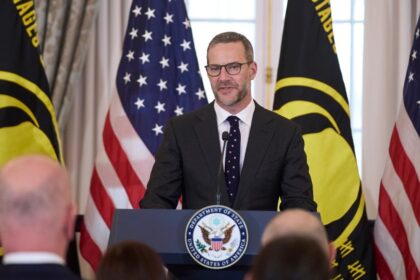By Adeyemi Adekunle
The Nigeria Centre for Disease Control and Prevention (NCDC) has sounded the alarm over a sharp increase in Lassa fever cases and fatalities, signaling an urgent public health crisis in the country.
With 1,154 confirmed cases and 190 deaths recorded so far in 2024, the viral hemorrhagic fever continues to spread rapidly, raising concerns among health authorities and the general public.
Dr. Jide Idris, the Director General of the NCDC, disclosed the disturbing statistics during a press briefing in Abuja on Monday, December 23.
He highlighted that the case fatality rate has consistently remained high at over 13%, emphasizing the seriousness of the outbreak. A total of 9,492 suspected cases have been reported, marking a significant increase compared to the same period in 2023. While this rise is partly attributed to improved disease surveillance, the growing number of deaths underscores the urgent need for robust intervention measures.
The outbreak has primarily affected six states, with Ondo, Edo, Bauchi, Taraba, Benue, and Ebonyi accounting for 89% of confirmed cases.
Ondo and Edo alone make up more than half of the total cases, with local government areas such as Owo, Esan West, and Jalingo emerging as epicenters. These regions, categorized as endemic zones, continue to grapple with the devastating impact of the disease.
Environmental and socio-economic factors, including poor sanitation and inadequate rodent control, have exacerbated the situation, creating fertile ground for the virus’s transmission.
Lassa fever, transmitted through contact with food or household items contaminated with rodent excreta, tends to peak during the dry season from October to May.
This seasonal spike is attributed to increased human activity that heightens exposure to rodents, the primary carriers of the disease. The NCDC, following a dynamic risk assessment, has categorized the outbreak as “High Risk” and activated Response Level 2.
This classification mandates an urgent, tailored response to mitigate the spread of the virus, particularly in the hardest-hit areas.
Dr. Idris emphasized the need for a coordinated, multi-sectoral approach to protect vulnerable populations and curb fatalities.
He called for targeted interventions, including enhanced public awareness campaigns, rodent control programs, and improved healthcare access in affected communities.
The NCDC has deployed rapid response teams and ramped up laboratory testing and surveillance efforts in a bid to contain the outbreak. However, Dr. Idris stressed that community engagement remains critical, urging Nigerians to maintain proper hygiene, secure food storage, and seek immediate medical attention if symptoms such as fever, vomiting, or bleeding occur.
Lassa fever remains a year-round endemic threat in Nigeria, posing significant challenges to public health.
While the current outbreak highlights the fragility of the nation’s healthcare infrastructure, it also underscores the need for sustained investment in preventive measures and emergency preparedness.
The rising death toll is a stark reminder of the urgency of this situation, with every effort needed to prevent the crisis from escalating further.
Dr. Idris called on all stakeholders, including state governments, international partners, and the public, to join forces in combating this deadly disease.




